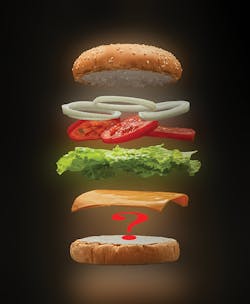The other night the tech section of the evening news got my attention. They were talking about the latest in green biotechnology. I had not been following biotechnology, much less green biotechnology. It seems there is a cow-free burger that consumers can’t tell the difference from actual meat in taste or texture.
What does that have anything to do with the grid you ask? Well, the driving force behind cow-free burger development is multifaceted. Among other arguments, cows require a lot of energy resources and they produce substantial amounts of greenhouse gases. That is where green biotechnology comes into play, biotech researchers are looking into alternatives to conserve energy and reduce greenhouse gases.
Since those are also topics of huge interest to the power delivery industry, it got my attention. I had no idea there was so much research and technology going into this quest for the cow-free burger — even Bill Gates is investing in it. Recently, the consumer has gotten in the loop and they appear to be supportive. So much so that several major burger chains are testing the waters, and millions of these biotech burgers have been sold with more on the grill every day.
The power industry has been talking about green energy for a couple of decades with renewable energy, and our customers are really supporting the green energy concept. One area that has our customer’s interest is the home assistant. Initially these home assistant technologies were pretty basic in nature. They used simple voice commands to control lighting, play music, adjust thermostats, etc. Somewhere along the line, they started becoming smarter. Now they are being called home management systems.
It Makes Sense
The home assistants were made over when artificial intelligence (AI) was integrated into them. AI made them brainy and allowed these devices to take a quantum leap forward. They started learning the user’s personnel preferences and tastes, which led them to anticipating the user’s needs. It also brought them into energy management; they get real-time rate data from utilities and control appliance usage. The consumer loads the dishwasher, washing machine or whatever, and the digital assistant does the rest.
With the increasing prices of time-of-day rates (as much as 60ȼ/kWh or more in some areas), extreme weather events, and the resulting power outages, the consumer is looking at technology to lessen the impact. That’s where these digital assistants combined with the increasing amounts of rooftop solar and energy storage are beginning to have promise. The customer’s digital assistant now has demand side management capabilities, and the edge of the grid is becoming a very interesting place. It’s an environment much like the early days of energy storage. Interestingly, 10 years ago last August I wrote T&D World’s first energy storage supplement. That supplement turned out to be one of those subjects that was either loved or hated. There was no middle ground — kind of like cow-free burgers today. Proving what the little green amphibian always said, “It’s not easy being green!”
A Hybrid Grid
Ten years later, it’s hard to think of a time when energy storage was such a bit player on the smart grid stage or that anyone suggesting storage was needed would raise such ire. Today, wind farms with storage technologies have been winning contracts for power over fossil-fuel generation. There is even a hybrid generator that GE developed. It uses a combination of fossil-fuel generators and energy storage technology to eliminate standby operation. The result is a green technology that offers more efficient operation, lower operating costs and a reduced carbon footprint.
I was talking with Byron Flynn, GE’s technical solutions director with GE Renewable Energy, about how the grid is being hybridized. He said, “Just as hybrid electric vehicles have benefited from multiple energy sources, the Hybrid Grid optimizes renewable generation, battery storage with clean traditional generation. To get the most of this new grid, today’s utilities are enhancing their planning, operations, maintenance, grid protection and communications systems to empower their customers and new energy stakeholders, driving new use cases and unlocking business value.”
With digital applications like these, the 21st century grid is shaping up to be a fascinating place. Maybe digital technologies are greener than I thought. When I first heard of cow-free burgers, I never expected them to lead me back to renewable energy and energy storage, proving green digital technologies may be more than we see at first glance.
About the Author
Gene Wolf
Technical Editor
Gene Wolf has been designing and building substations and other high technology facilities for over 32 years. He received his BSEE from Wichita State University. He received his MSEE from New Mexico State University. He is a registered professional engineer in the states of California and New Mexico. He started his career as a substation engineer for Kansas Gas and Electric, retired as the Principal Engineer of Stations for Public Service Company of New Mexico recently, and founded Lone Wolf Engineering, LLC an engineering consulting company.
Gene is widely recognized as a technical leader in the electric power industry. Gene is a fellow of the IEEE. He is the former Chairman of the IEEE PES T&D Committee. He has held the position of the Chairman of the HVDC & FACTS Subcommittee and membership in many T&D working groups. Gene is also active in renewable energy. He sponsored the formation of the “Integration of Renewable Energy into the Transmission & Distribution Grids” subcommittee and the “Intelligent Grid Transmission and Distribution” subcommittee within the Transmission and Distribution committee.
